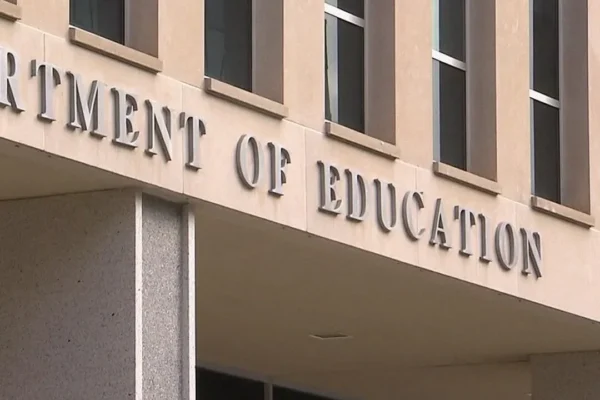The U.S. Department of Education’s mission, as established by Congress, is to “strengthen the Federal commitment to assuring access to equal educational opportunity for every individual.” Congress, of course, has the authority to alter that mission or even close the department. It hasn’t done either. But the Trump administration’s latest round of staffing cuts during the federal government shutdown, temporarily paused by a federal judge, has left the agency with less than 40 percent of its prior personnel, undercutting the department’s mission and Congressional authority, at the expense of the nation’s most vulnerable students.
The latest layoffs nearly eliminated the staff in the Office of Special Education (OSEP). The office supports the learning of students with disabilities by distributing and overseeing some $15 billion for legally mandated services such as speech therapy, extra reading support, and paraprofessionals who work one-on-one with students with medical, learning, or behavioral needs. OSEP also provides research-based guidance to states, schools, and teachers on how best to serve students with disabilities.
While efficiency should be a priority in every government agency, Department of Education employees told ABC News and other news outlets that OSEP lacks sufficient staff to run the special education program in the wake of the cuts. That’s likely to mean delays in distributing future funding to states and school districts and less oversight to ensure that students are receiving the support they’re entitled to by law.
The layoffs also make it nearly impossible for OSEP to run its competitive grant programs that support needs like training more special education teachers. Forty states, the District of Columbia, and Puerto Rico projected shortages of special education teacher for the 2025-26 school year.
Also nearly eliminated were the staff in the Office of Elementary and Secondary Education (OESE). OESE administers the majority of federal K-12 funding, including Title I resources that support schools with significant portions of students living in high-poverty communities or low-income households and Title II funds that support the recruitment, retention, and professional learning of educators. The office also manages programs serving homeless students, students in foster care, and rural communities with many children from military families.
Here too, delays in getting out future funding are a near certain result of these cuts. There’s also likely to be little or no technical assistance for states and scant scrutiny of whether states are meeting their obligations under federal law to identify and work to improve low-performing schools. The office may even lack the capacity to calculate future state funding.
OESE also administers grants through competitions the office may not be able to run in the wake of the latest layoffs, in such areas as school safety, student literacy, and charter schools, which the Trump administration has championed.
The President has made bold proposals to transform how public education is funded and supported—or not—at the federal level, including shifting responsibilities from the Education Department to other federal agencies. But there is no plan in place to do that and no other agency currently has authority or funding to take on the work of the Education Department offices that have been hollowed out in recent days.
The education community is used to lively debate about how best to support students. It has often vigorously disagreed within and across parties, movements, and constituencies about how best to support student learning. But at the federal level, the Constitution charges the executive branch with implementing legislation that Congress passes and presidents sign, including the legislation creating the U.S. Department of Education nearly half a century ago.
As is now clear, the Trump administration has sought to seize Congress’s authority for itself by refusing to staff federal agencies that implement the nation’s laws and by slowing or restricting the flow of funds Congress has appropriated. Beyond the public servants who have lost their livelihoods, there can be no debate over who is going to pay the highest price for the administration’s latest iteration of this strategy at the Department of Education: students throughout the nation who need the most support, who the department was created by Congress to serve.


